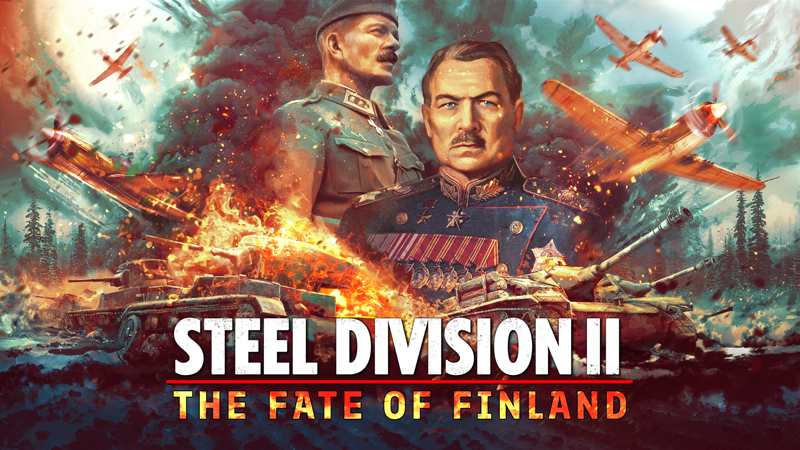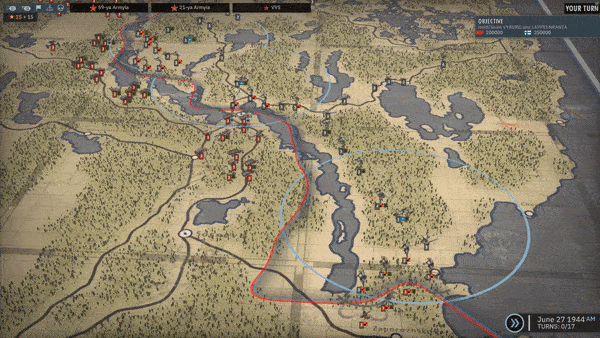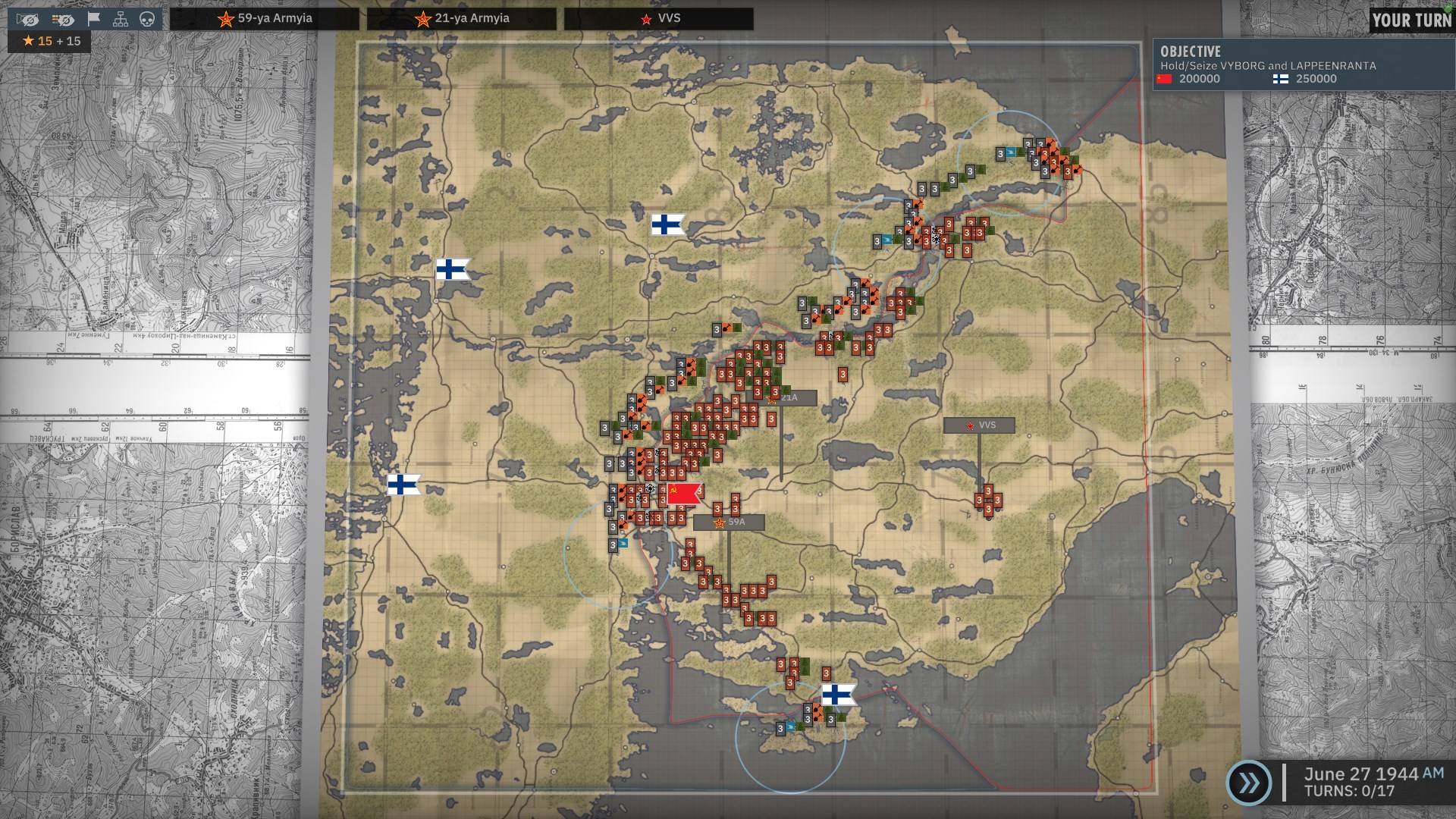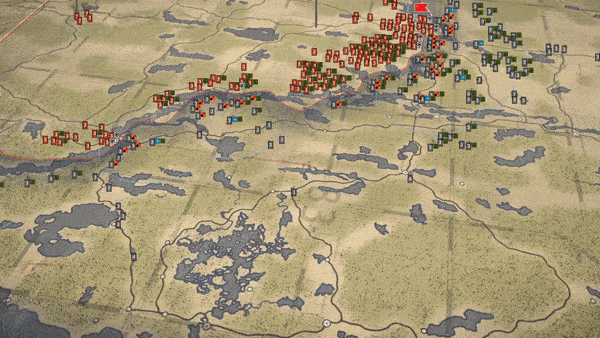Steel Division 2 - DLC#2 The Fate of Finland - Units and Aces
We are back again!
The Fate of Finland DLC will bring a host of new content to Steel Division 2, including 200+ new units and 2 brand-new Aces. In today’s blog post, we are going to be taking a good look at these heroic Aces and their vehicles, as well as highlighting several of the new units featured in our new expansion.
Keep on reading to find out more!
The Aces
First off, two new Aces will ship with The Fate of Finland DLC. As you know, Aces are unique units that play exactly the same as their base version, adding no statistical or gameplay benefit whatsoever. You can find them in your Armory or battlegroup by looking for the golden-trim around the unit portrait. An Ace’s vehicle features a special personalized paint job to set it apart.
Eino “Illu” Juutilainen
The new Axis Ace is no other than the Finnish fighter pilot Eino “Illu” Juutilainen who during the war became the top flying ace of the Finnish Air Force. After a long and illustrious career, with 94 confirmed kills, “Illu” shot down his last plane over the Karelian Isthmus in September 1944. In Steel Division 2, he will be flying the Me-109 G-2/R1, the same type in which the Finnish pilot scored 58 of his real-life air victories. Let’s see which one of you can match that record in-game!


Alexander Bilyukin
On the Allied side, we have another Ace fighter pilot: Alexander Bilyukin, officially decorated with the highest distinction possible, the Hero of the Soviet Union medal. Based in Leningrad for most of the war, the experienced Russian managed to shoot down 23 enemy planes during his career. Bilyukin too survived to see the end of the war. In Steel Division 2, he flies the lend-lease P-39N Airacobra.

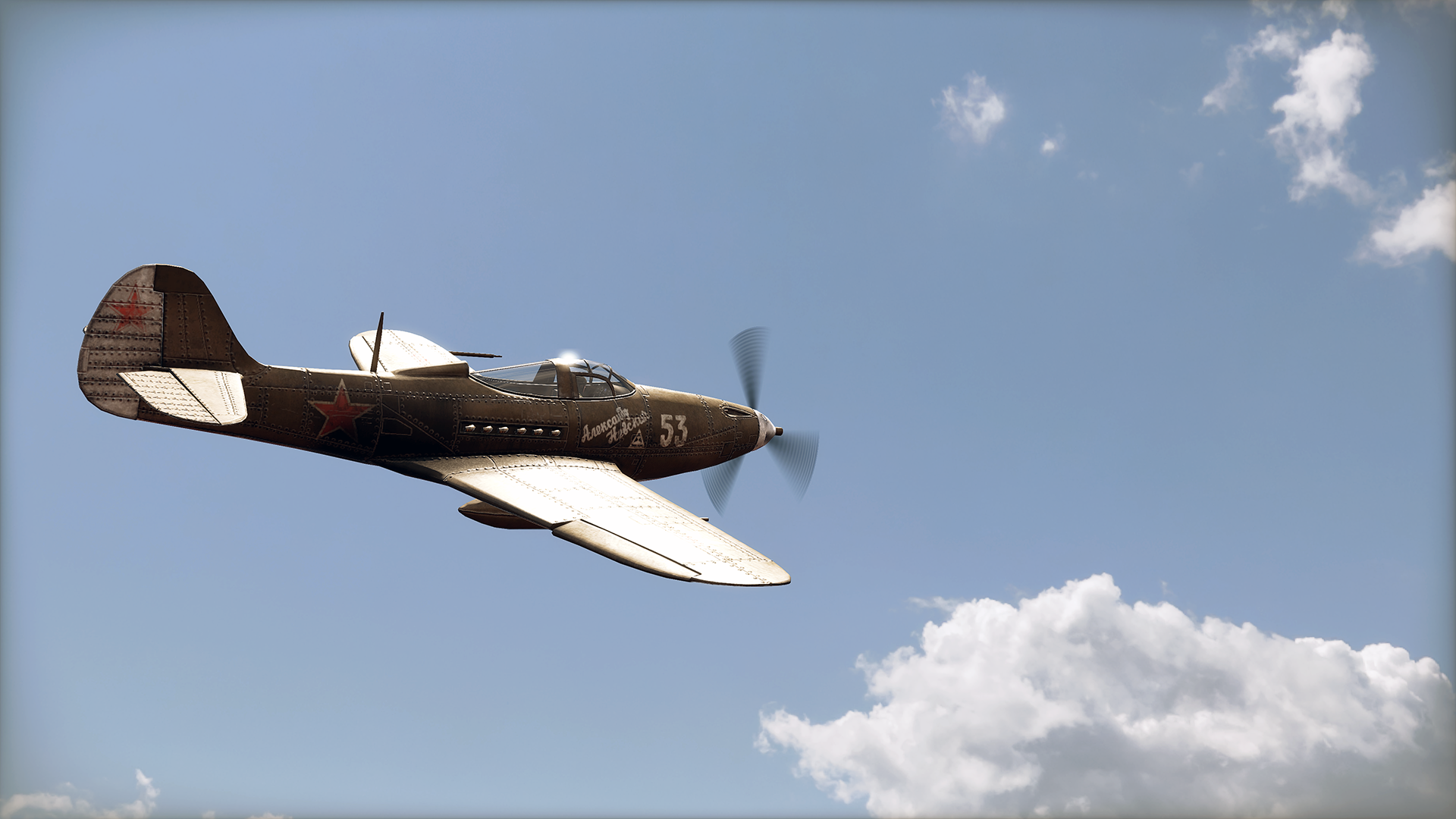
Over 200+ new units
Finland proved to be a unique battleground in World War 2: sparsely populated, densely forested and far to the north on the flank of the Eastern Front. Being a minor theatre meant that quite a few of the vehicle types found here were unusual, outdated, or did not see much action elsewhere due to their low production numbers. Not only that, many captured tanks found a new lease on life thanks to their new owners. The Fate of Finland brings over 200 new units to Steel Division 2, with some pre-existing vehicles becoming available to a different nation for the first time.
BT-42
Throughout the Continuation War, the Finnish Army lacked sufficient tanks to make a strong armored fist. Having only minor production facilities, the Finns needed to scratch-build their way through the conflict. One of the results was the BT-42 assault gun, available in Steel Division 2 courtesy of the Panssaridivisioona battlegroup. Only a handful were built by combining captured Soviet material, namely BT-7 fast tanks, with a consignment of outdated British QF 4.5 Mk. II Howitzers. The BT-42 was not particularly successful as a tank, especially having trouble penetrating the armor of enemy tanks such as the T-34 but very effective when used as an infantry support vehicle. However, with only limited resources available to the Finnish Army, they were nonetheless pressed into action during the heavy fighting around Vyborg in the summer of 1944.

T-26E
An interesting design, the T-26E is actually the Vickers 6 ton, a British light tank design passed on by the United Kingdom when first offered to them. Instead, it was not only adopted by the Soviet Union (which led to one of the most successful tank designs of the 1930s, the T-26) but a small number were also bought by Finland. Those examples that survived the Winter War of 1939 were retrofitted with captured Soviet 45mm guns, creating in effect the Finnish T-26E. This model was almost identical to its Red Army’s counterpart, save for several minor differences (shorter engine deck, turret mounted right-hand side, etc.).

VL Myrsky
The VL Myrsky series of fighter planes was the only Finnish true homegrown design. Events on the ground outpaced development, though, and only by 1941 did a prototype take to the air. The first tests were far from satisfactory, with crashes killing two test pilots, and revealing structural issues which delayed the introduction of the Myrsky. Only around the time of the Soviet offensive into Karelia did the first production examples make their way to the Finnish Air Force, where they performed well in their assigned reconnaissance regiment. In Steel Division 2, the VL Myrsky will be available as a dedicated fighter plane.

T-28
The multi-turreted T-28 was one of the first true medium tanks when built in the early part of the 1930s. It featured multiple turrets - smaller machine gun turrets flanked by the main turret carrying a 76.2 mm gun - and had a reasonable amount of mobility and armor when introduced. However, by the start of World War 2, the T-28 was no longer effective with large numbers lost in the opening stages of Operation Barbarossa. By 1944, only a scattering of T-28 tanks had survived, in some cases captured by Finnish forces and being put against their original owners.

BT-7
The BT-7 was the last of a short but influential line of Red Army fast tanks, mass produced at the start of World War 2. Favoring speed and maneuverability over armor protection, the BT-7 could still pack a punch thanks to its 45mm tank gun and was used to great effect in the first years of the war. This fast tank is also the direct ancestor to the iconic T-34. By the time the Leningrad Front went on the offensive against Finland, plenty of BT-7 tanks were still around to be used in active combat. In Steel Division 2, the Axis already had access to captured BT-7s, but for the first time the light tank will become available to the Red Army with 126-y L. Gornostrelkovy Korpus battlegroup.

P-40N Kittyhawk
The lend-lease P40 Kittyhawk has the distinction of being the third most-produced American single-seat fighter during the war (behind the P-51 and P-47). Lacking certain combat characteristics, the Curtiss P40N Kittyhawk (also known as the Warhawk) was rarely used on the Western Front but saw extensive action with Allied air forces in the North African, Pacific and China theatres. Not only that, the Kittyhawk was the first aircraft to be lend-leased to the USSR. With over 13,000 produced in total, including variants, the P40N was the final production model, and well liked by the Soviet pilots who flew them.

What to look out for next?
That’s it for this week’s post. Keep a close eye out on our Steam and Eugen forums, or social channels (Facebook and Twitter). You can also join us on our Discord channel or Reddit page.
See you on the battlefield, commander!
The Fate of Finland DLC will bring a host of new content to Steel Division 2, including 200+ new units and 2 brand-new Aces. In today’s blog post, we are going to be taking a good look at these heroic Aces and their vehicles, as well as highlighting several of the new units featured in our new expansion.
Keep on reading to find out more!
The Aces
First off, two new Aces will ship with The Fate of Finland DLC. As you know, Aces are unique units that play exactly the same as their base version, adding no statistical or gameplay benefit whatsoever. You can find them in your Armory or battlegroup by looking for the golden-trim around the unit portrait. An Ace’s vehicle features a special personalized paint job to set it apart.
Eino “Illu” Juutilainen
The new Axis Ace is no other than the Finnish fighter pilot Eino “Illu” Juutilainen who during the war became the top flying ace of the Finnish Air Force. After a long and illustrious career, with 94 confirmed kills, “Illu” shot down his last plane over the Karelian Isthmus in September 1944. In Steel Division 2, he will be flying the Me-109 G-2/R1, the same type in which the Finnish pilot scored 58 of his real-life air victories. Let’s see which one of you can match that record in-game!


Alexander Bilyukin
On the Allied side, we have another Ace fighter pilot: Alexander Bilyukin, officially decorated with the highest distinction possible, the Hero of the Soviet Union medal. Based in Leningrad for most of the war, the experienced Russian managed to shoot down 23 enemy planes during his career. Bilyukin too survived to see the end of the war. In Steel Division 2, he flies the lend-lease P-39N Airacobra.


Over 200+ new units
Finland proved to be a unique battleground in World War 2: sparsely populated, densely forested and far to the north on the flank of the Eastern Front. Being a minor theatre meant that quite a few of the vehicle types found here were unusual, outdated, or did not see much action elsewhere due to their low production numbers. Not only that, many captured tanks found a new lease on life thanks to their new owners. The Fate of Finland brings over 200 new units to Steel Division 2, with some pre-existing vehicles becoming available to a different nation for the first time.
BT-42
Throughout the Continuation War, the Finnish Army lacked sufficient tanks to make a strong armored fist. Having only minor production facilities, the Finns needed to scratch-build their way through the conflict. One of the results was the BT-42 assault gun, available in Steel Division 2 courtesy of the Panssaridivisioona battlegroup. Only a handful were built by combining captured Soviet material, namely BT-7 fast tanks, with a consignment of outdated British QF 4.5 Mk. II Howitzers. The BT-42 was not particularly successful as a tank, especially having trouble penetrating the armor of enemy tanks such as the T-34 but very effective when used as an infantry support vehicle. However, with only limited resources available to the Finnish Army, they were nonetheless pressed into action during the heavy fighting around Vyborg in the summer of 1944.

T-26E
An interesting design, the T-26E is actually the Vickers 6 ton, a British light tank design passed on by the United Kingdom when first offered to them. Instead, it was not only adopted by the Soviet Union (which led to one of the most successful tank designs of the 1930s, the T-26) but a small number were also bought by Finland. Those examples that survived the Winter War of 1939 were retrofitted with captured Soviet 45mm guns, creating in effect the Finnish T-26E. This model was almost identical to its Red Army’s counterpart, save for several minor differences (shorter engine deck, turret mounted right-hand side, etc.).

VL Myrsky
The VL Myrsky series of fighter planes was the only Finnish true homegrown design. Events on the ground outpaced development, though, and only by 1941 did a prototype take to the air. The first tests were far from satisfactory, with crashes killing two test pilots, and revealing structural issues which delayed the introduction of the Myrsky. Only around the time of the Soviet offensive into Karelia did the first production examples make their way to the Finnish Air Force, where they performed well in their assigned reconnaissance regiment. In Steel Division 2, the VL Myrsky will be available as a dedicated fighter plane.

T-28
The multi-turreted T-28 was one of the first true medium tanks when built in the early part of the 1930s. It featured multiple turrets - smaller machine gun turrets flanked by the main turret carrying a 76.2 mm gun - and had a reasonable amount of mobility and armor when introduced. However, by the start of World War 2, the T-28 was no longer effective with large numbers lost in the opening stages of Operation Barbarossa. By 1944, only a scattering of T-28 tanks had survived, in some cases captured by Finnish forces and being put against their original owners.

BT-7
The BT-7 was the last of a short but influential line of Red Army fast tanks, mass produced at the start of World War 2. Favoring speed and maneuverability over armor protection, the BT-7 could still pack a punch thanks to its 45mm tank gun and was used to great effect in the first years of the war. This fast tank is also the direct ancestor to the iconic T-34. By the time the Leningrad Front went on the offensive against Finland, plenty of BT-7 tanks were still around to be used in active combat. In Steel Division 2, the Axis already had access to captured BT-7s, but for the first time the light tank will become available to the Red Army with 126-y L. Gornostrelkovy Korpus battlegroup.

P-40N Kittyhawk
The lend-lease P40 Kittyhawk has the distinction of being the third most-produced American single-seat fighter during the war (behind the P-51 and P-47). Lacking certain combat characteristics, the Curtiss P40N Kittyhawk (also known as the Warhawk) was rarely used on the Western Front but saw extensive action with Allied air forces in the North African, Pacific and China theatres. Not only that, the Kittyhawk was the first aircraft to be lend-leased to the USSR. With over 13,000 produced in total, including variants, the P40N was the final production model, and well liked by the Soviet pilots who flew them.

What to look out for next?
That’s it for this week’s post. Keep a close eye out on our Steam and Eugen forums, or social channels (Facebook and Twitter). You can also join us on our Discord channel or Reddit page.
See you on the battlefield, commander!
